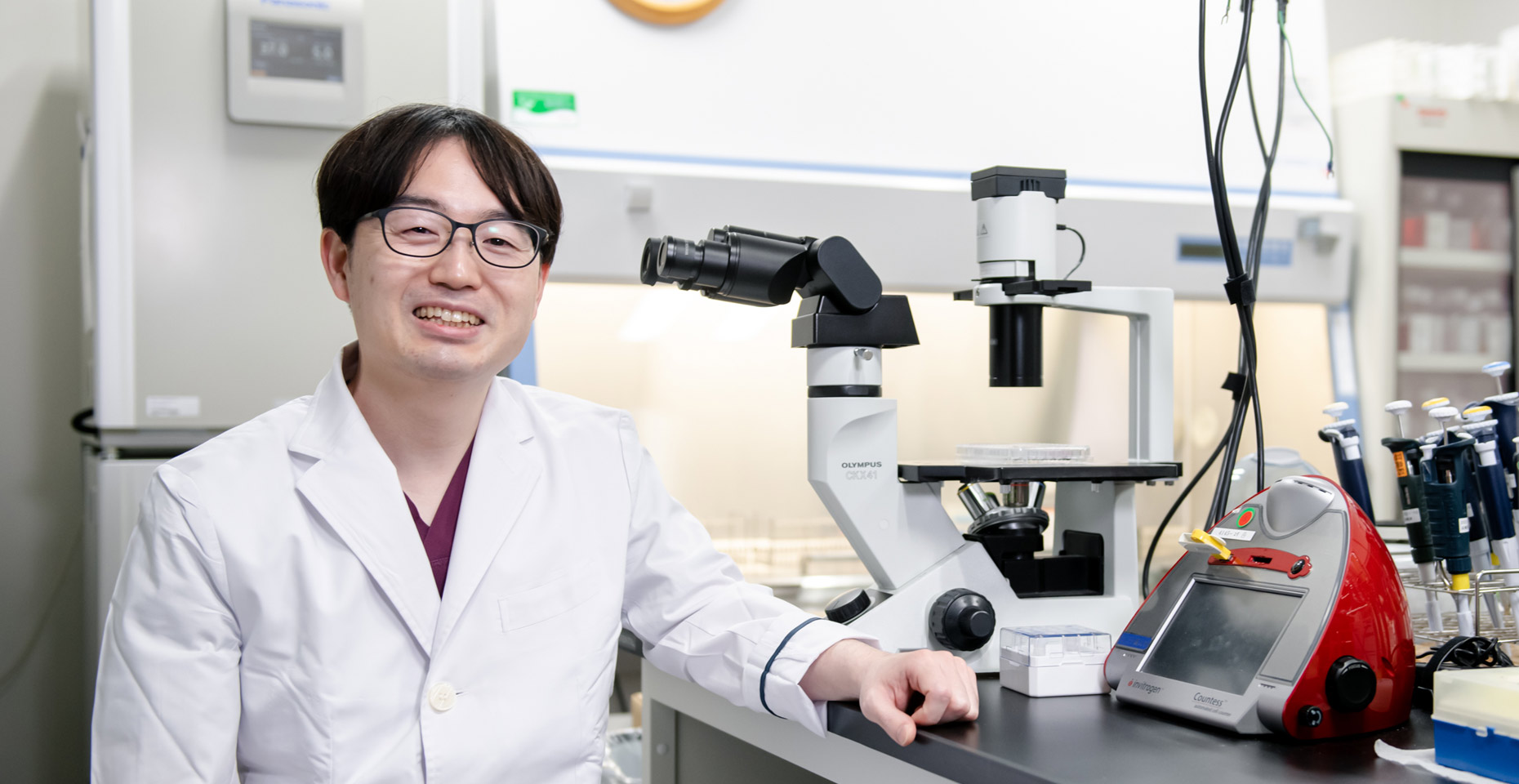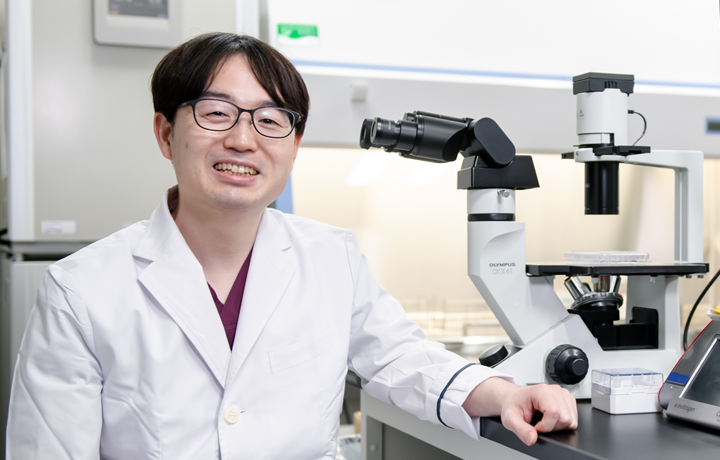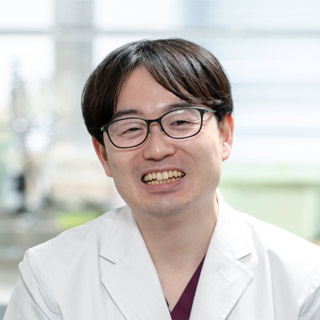The Ministry of Environment has announced an extremely high forecast for pollen scattering in the Northern, Eastern, and Central parts of Japan this spring in 2023. In light of this, we interviewed Assistant Professor Tomohisa Iinuma from the Department of Otorhinolaryngology, Head and Neck Surgery at the Graduate School of Medicine regarding Sublingual Immunotherapy as a potential treatment for improvement.
Hay fever: A widespread health issue in Japan with significant economic implications
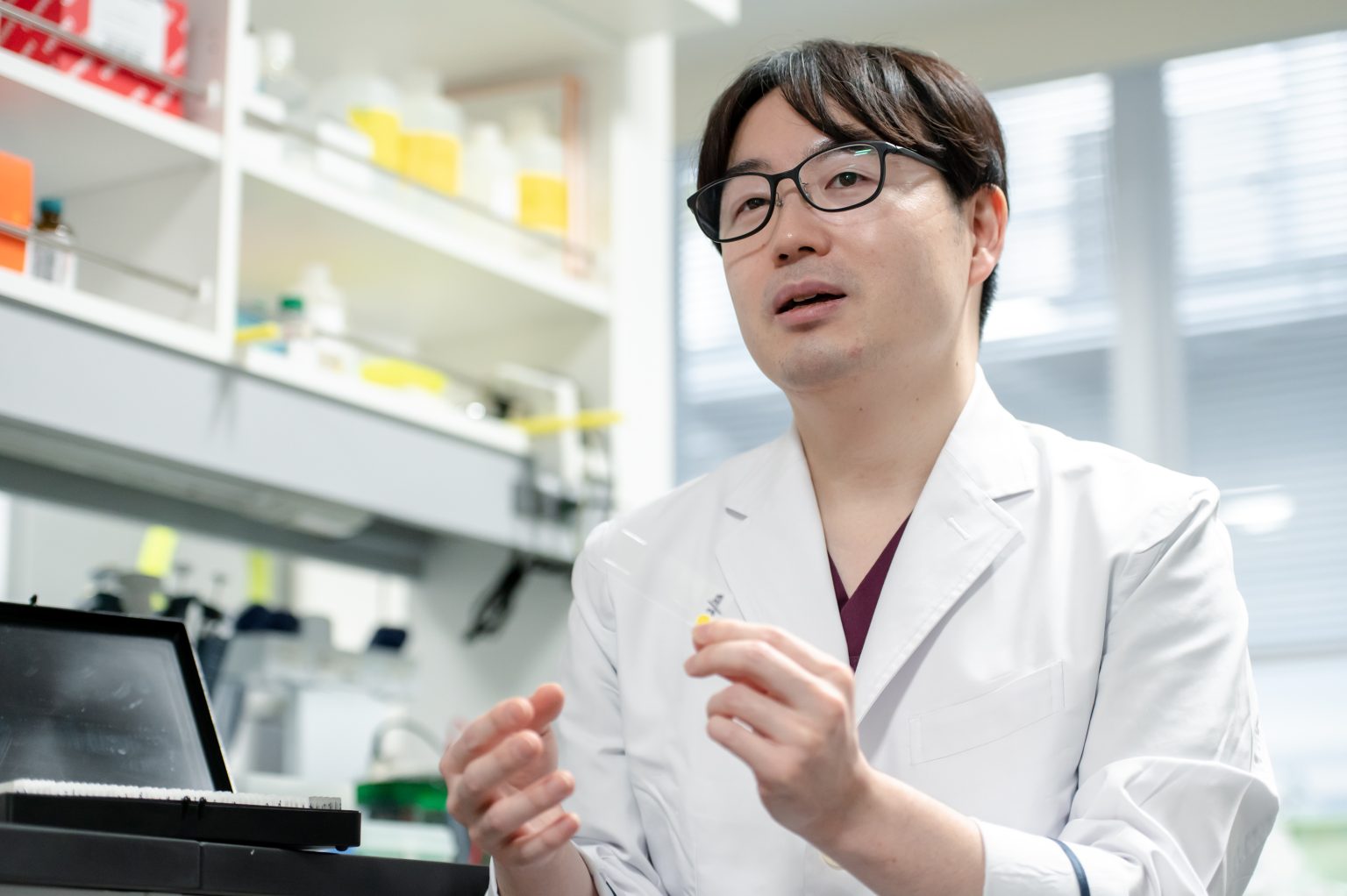
First of all, please explain how hay fever develops.
When pollen particles come in contact with the mucous membranes of our eyes and nose, they release allergens, substances that cause allergies. Our body then recognizes these allergens as foreign substances and triggers an immune response to fight them off. This immune response leads to the discharge of mucus, sneezing, and tears, which help expel the allergens from our body. Additionally, the swelling of the mucous membrane, resulting in a stuffy nose. The swelling serves as a protective mechanism to prevent any more foreign substances from entering the body.
How many people in Japan have Japanese cedar pollinosis?
The prevalence rate of Japanese cedar pollinosis in Japan has been steadily increasing in the past 20 years, with a 10% rise every decade. In 2019, it finally surpassed 40%. This disease stands out as having an exceptionally high and continuously rising prevalence rate, earning the label of a national affliction in Japan. Japanese cedar pollinosis symptoms are not limited to the nose and eyes; they can also manifest in the skin and bronchi. During the pollen season, around half of the population experiences some form of symptoms. This has a significant impact on the Japanese economy as individuals reduce their consumption due to symptoms, affecting activities such as sleep, study, work, and even outings.
The main treatments include oral antihistamines and nasal steroid sprays, but symptomatic treatments that alleviate symptoms cannot be fundamentally improved. Once it occurs, Japanese cedar pollinosis does not naturally resolve on its own, and it is a condition that requires a lifelong commitment to manage.
Sublingual Immunotherapy, the only treatment for Japanese cedar pollinosis that Chiba University was deeply involved in developing
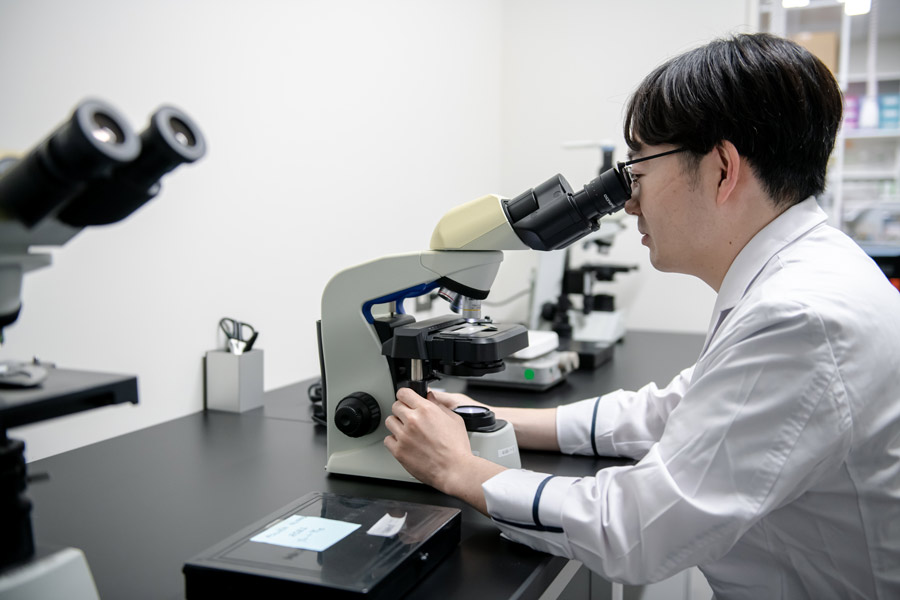
Hay fever is a lifelong commitment. It seems to weigh heavily on individuals. Is there any solution?
There is a treatment called immunotherapy, which helps the body become accustomed to pollen and alleviates symptoms caused by the individual’s constitution. This treatment has a history of about 100 years overseas. However, in the past, it involved injections and was not widely used in Japan due to the pain, risk of anaphylaxis, and frequent hospital visits. Therefore, Dr. Yoshitaka Okamoto, a former professor and current director of Chiba Rosai Hospital, developed a “Sublingual Immunotherapy” specifically for Japanese cedar pollen allergies addressing the drawbacks associated with traditional treatments. It is currently the only available cure.
Tell me more about Sublingual Immunotherapy
It is a simple treatment where one tablet containing Japanese cedar pollen extract is placed under the tongue for one minute every day. In the past, it used to be a liquid that required refrigeration, but we successfully collaborated with an overseas pharmaceutical company and a Japanese pharmaceutical company to develop it into a tablet form. The tablets can be stored at room temperature and are convenient to carry. Since its introduction in general medical practice in October 2014, it has shown effectiveness in 70 to 80% of patients, with very few reports of serious side effects, making it a highly safe treatment. The medication can be taken by individuals over the age of five. The treatment is covered by insurance, and the cost is comparable to that of antihistamine treatment.
(Note: Additional costs are required for initial blood tests and other examinations during the first consultation.)
You begin the treatment during the season when you have no symptoms. How long do you need to continue?
The effect gradually appears within 1 to 2 months after administration. However, in order to improve the underlying constitution, it is necessary to continue taking one tablet every day for about 3 years even if there are no symptoms. The effect of the treatment continues for several years after completion. Interestingly, about half of the patients continue taking the medication even after completing the treatment, expressing their desire to maintain the achieved results and avoid reverting to their previous state.
Unveiling a key aspect of the mechanism of Sublingual Immunotherapy for the first time
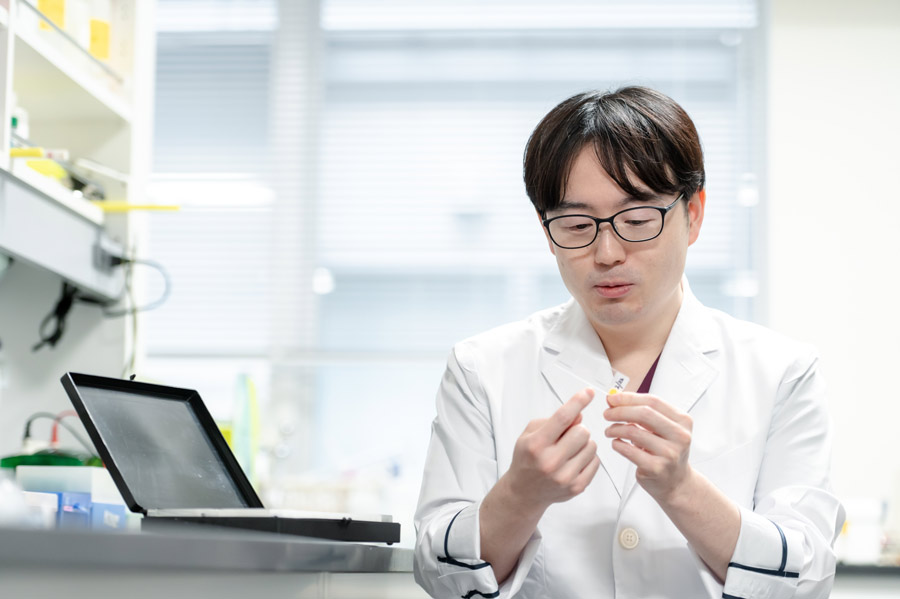
Why is Sublingual Immunotherapy effective in improving the constitution?
In order to investigate the mechanism of action of the drug, we obtained the cooperation of seven patients undergoing Sublingual Immunotherapy at the Chiba University Hospital. We conducted a detailed analysis and comparison of cells involved in allergy found in their blood samples before and after treatment.
As a result, we observed that the subjects who responded to Sublingual Immunotherapy showed a decrease in Tpath2 cells, which produce cytokines responsible for transmitting allergy information in response to Japanese cedar pollen. Instead, there was an increase in non-functional TransTh2 cells and regulatory Treg cells, which help suppress inflammation. This study represents the first instance where we were able to elucidate these cell changes through single-cell analysis, which allows us to investigate the detailed properties of the cells.
What are the advantages of single-cell analysis compaWhat are the advantages of single-cell analysis compared to conventional analysis?red to conventional analysis?
Until now, cell analysis has been conducted collectively, providing only an understanding of the overall average trend. However, with single-cell analysis, it becomes possible to simultaneously analyze the expression of thousands of genes in each individual cell, allowing us to predict cell differentiation pathways. From the results of this study, we discovered the possibility that Tpath2 cells may first transition into TransTh2 cells and then differentiate into Treg cells. We also identified the expression of a factor called “Musculin” that promotes this differentiation. Currently, we are further investigating whether the expression level of musculin can serve as a marker index to measure the effectiveness of Sublingual Immunotherapy.
Exploring a variety of tools, including modern IT technologies and traditional methods.
You are proficient in using a wide range of tools, from analog to latest technologies.
Nowadays, it has become common for people to search for information on the Internet whenever something happens. In our medical practice, we utilize Google Trends, which provides insights into the frequency of searches for keywords like “hay fever,” to get valuable insights. I learned about this method from a respected allergy research expert during my participation in a European conference. Despite being over 70 years old, he astounded me with his innovative approach of applying web marketing tools to research. Additionally, starting this year, I am considering fully leveraging the app called “MASK-air,” which was developed in Europe and is now used in 25 countries worldwide. This tool that is even used to create guidelines for the treatment of allergic rhinitis in Europe.
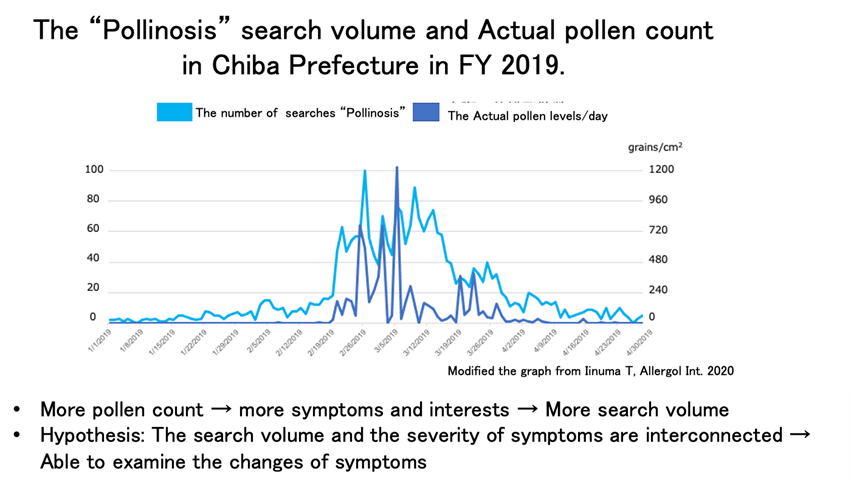
The wave of searches in Chiba in FY2019 is linked to the number of cedar pollen count in Chiba
In addition, in order to investigate the correlation between the amount of Japanese cedar pollen dispersion and the severity of allergic symptoms, our research team has been conducting a sampling survey since 2006. We collect pollen daily on the university rooftop during the Japanese cedar pollen season. While leveraging cutting-edge technology, we also recognize the significance of this diligent data collection to increase the reliability of our research.
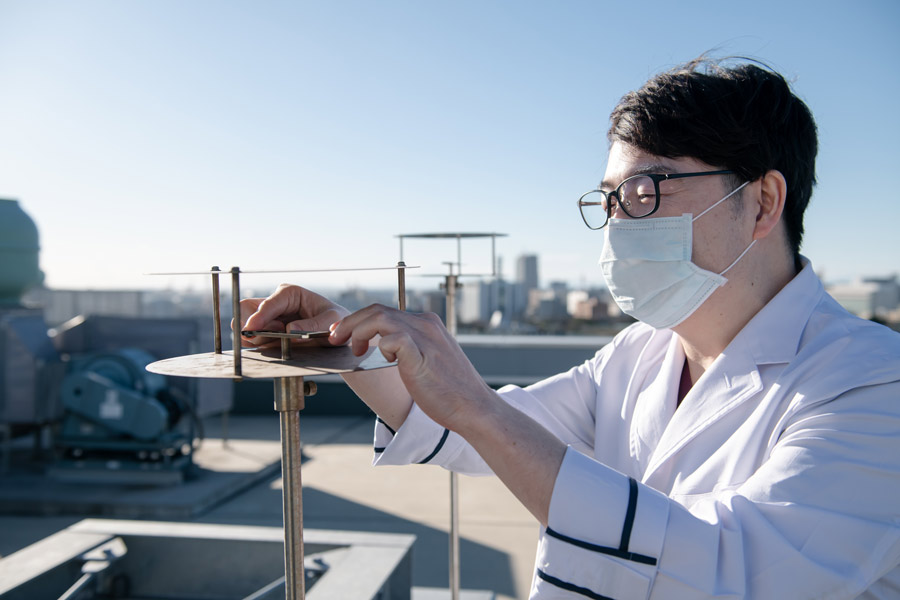
Selecting the most effective treatment for optimal hay fever control
At present, treatment with Japanese cedar specific Sublingual Immunotherapy is effective only for Japanese cedar pollinosis. How should we deal with other pollen?
Currently, the available medications in Japan are only effective against dust mites and Japanese cedar pollen. Although drugs have been developed for other types of pollen overseas, they are not yet accessible in Japan. However, it has been observed that when the symptoms of cedar pollen allergy are suppressed, there is a tendency for symptoms caused by subsequent hinoki pollen dispersion to be alleviated.
Cedar trees reach maturity and produce the highest amount of pollen around the age of 30. In addition, it is predicted that the amount of pollen will increase in the future due to the impact of global warming. Efforts are being made to develop cedar trees that do not produce pollen, but unfortunately, it seems that pollen dispersion will continue for some time.
I hope to find the most suitable treatment method from options such as antihistamines, nasal sprays, and Sublingual Immunotherapy, which Chiba University has been involved in developing, to ensure that you can experience the hay fever season as comfortably as possible.
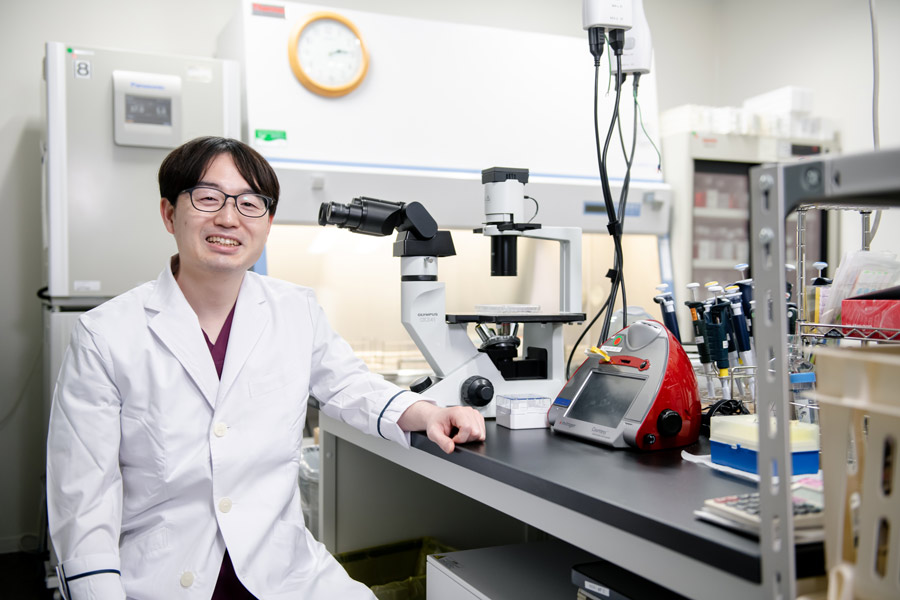
Recommend
-
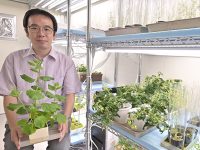
Unfettered thinking, elaborate theorizing, and an accepting and positive attitude: With the precepts of his former supervisors in mind, Dr. Shimada is tackling the global food crisis
2023.01.04
-
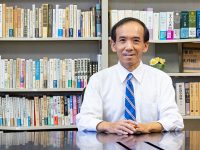
What causes nations and regions to perceive the COVID-19 crisis differently?〜Insights from the Humanities and Social Sciences Needed for Disaster Management Research
2022.12.12
-
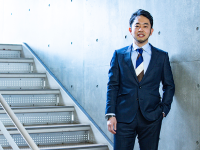
The joy of revealing the unknown: The challenge of solving the mystery of the Sun
2022.09.28


